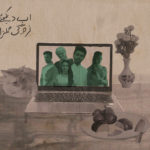Are You Still Watching?: Hindi Cinema and Storytelling in the Netflix Era
When Netflix entered India in January 2016, a voracious market with spiking mobile and internet connectivity awaited. Though the blockbuster release of Dangal, the highest-grossing Indian film of all time, capped off that same year, audiences preferred to binge-watch TV shows on the still-novel OTT platform. And when the media giant reached critical mass around 2018, no data analyst, no 10-year plan could have foreseen its dominant role in shaping the current shared culture of being “alone together”.
Eventually, thanks to an influx of available titles, views on streaming providers skewed toward films. Flash forward to the present, where movie theatres exist merely as spectral holdovers from the way we were, and Hindi cinema (or Bollywood if we want to be controversially specific) is taking measured steps to pull through after the flattening of its old infrastructure. The more level playing field created by Netflix and its competitors is consequently seeing 100-crore hopefuls premiering in the same spotlight as eccentric auteur experiments. But what does this mean for the filmmakers? Is their creative impulse at a crossroads as well?
As storytellers and weavers of modern myths, Honey Trehan, Neeraj Udhwani, Anvita Dutt and Sharan Sharma – all with major (and in some cases, unplanned) releases on Netflix India this year – didn’t upend their processes while negotiating the universe of the small screen. Where the familiar practice of watching movies communally has faded into an amorphous memory for the rest of us, the art of filmmaking, for these writer-directors, remains intact regardless of the medium or audience. The same muse visits; the desire to mirror intimate individual journeys rather than pander to an imagined spectator is what wills their stories into being. Take the supernatural period piece Bulbbul, in which the larger truth that Dutt is personally investigating penetrates even the most fantastical scene, stripped of and at the same time entwined in the trappings of its resplendent filmic setting. Look beyond the contrivances, and you will see that each of the other directors’ narratives is inflected by a similar honesty, one that prioritises the human experience.
The four cineastes also appear to cannily sense the specific advantages of galvanising a built-in digital audience. The varying degrees of critical success aside, their films crested the wave of internet culture that had surfaced when Hindi cinema merged with streaming sites. It’s apt, then, that much of our conversation with them focuses on the tension between one’s own aspirations and the surrounding systemic frameworks, not to mention that it took place within the “new normal” of Zoom interactions.
Adaptation is a well-known evolutionary tactic in the face of an altered environment: the more we resist change, the farther behind we fall. So, the numerous stalled movie productions may ultimately have to submit to this updated distribution model as long as the coronavirus keeps their fates in limbo. Trehan, Udhwani, Dutt and Sharma are among those who were willing to make the adjustment and chart the path ahead, embracing the shift as an opportunity to freshly reflect on their craft.

Click the video to watch the full discussion
Related posts from Verve:
Verve Trending
Sorry. No data so far.
us on Facebook to stay updated with the latest trends





